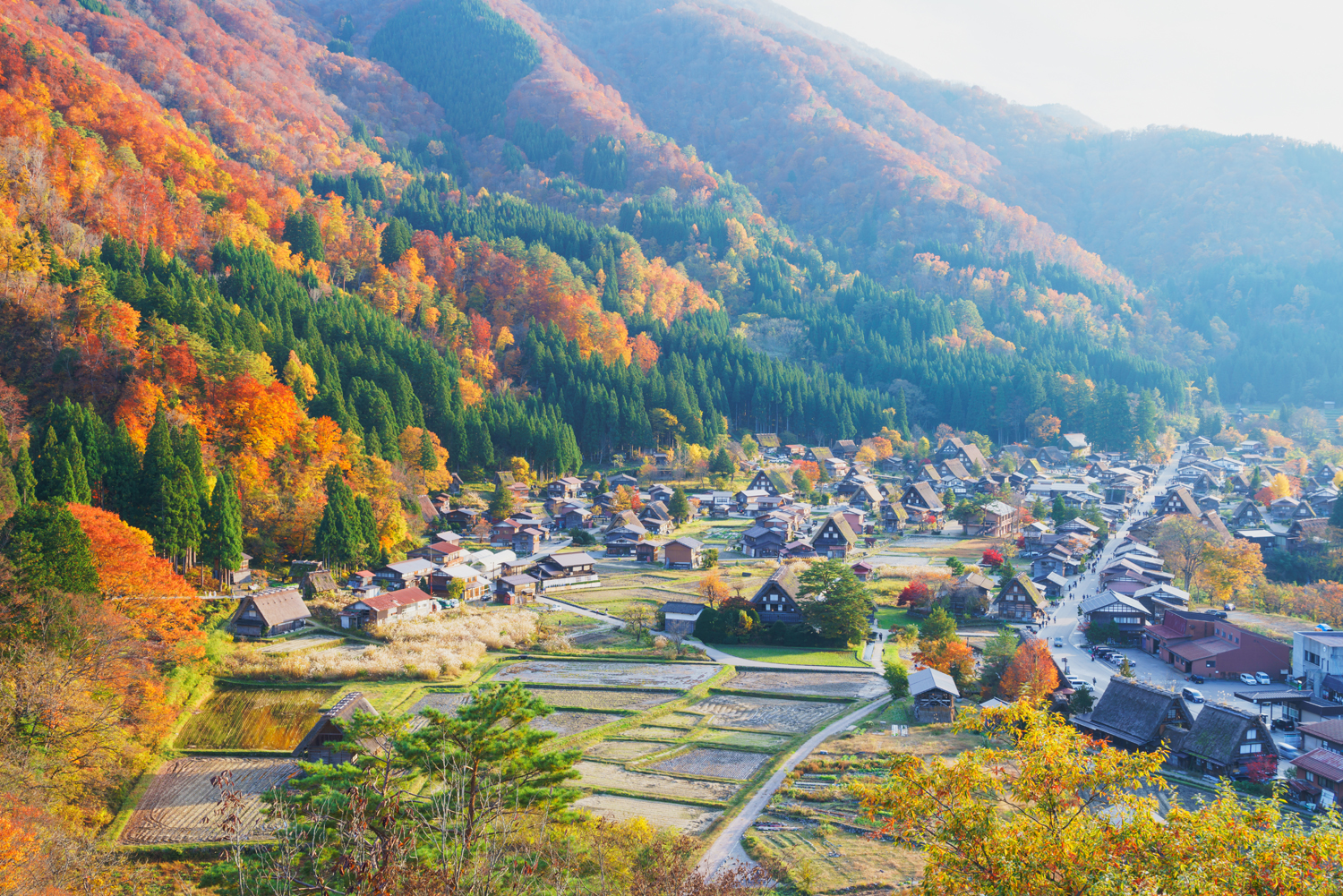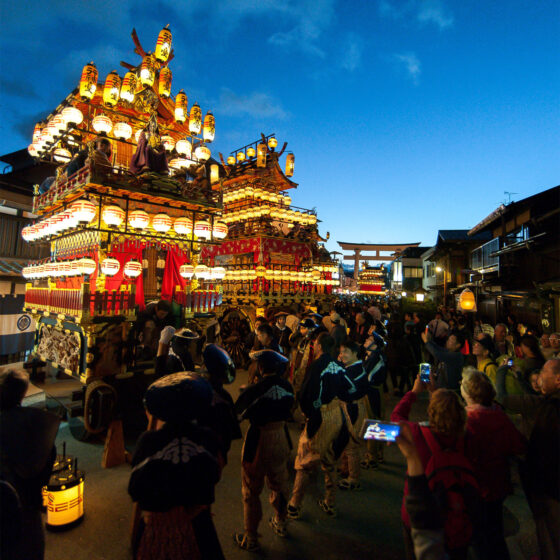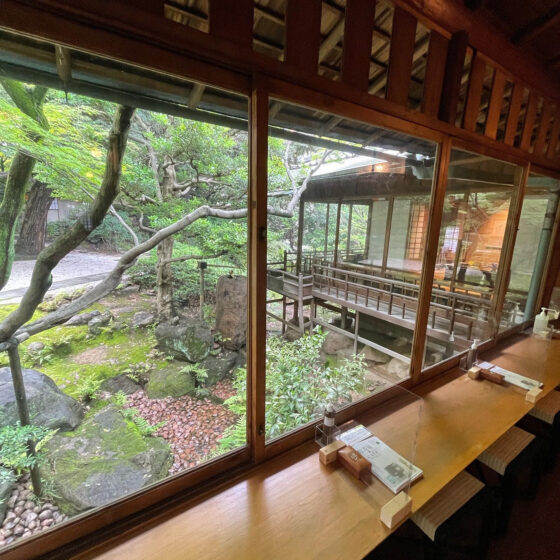Gassho-zukuri farmhouses: A remnant of traditional Japan
- Home to traditional gassho-zukuri farmhouses, the Shirakawa-go region in Gifu and Gokayama region in Toyama were designated UNESCO World Heritage Sites in 1995. Surrounded by a rich natural environment and four distinct seasons, the people living in these regions have maintained their unique traditions and culture.
- With steep thatched roofs which looks like a book standing slightly open and a structure of posts and beams stained black by years of exposure to smoke and soot, the houses are built using only rice straw rope with no nails or metal fixtures. The graceful architecture of the houses makes them look almost like a “work of art”. However, it is a place full of essential innovations needed to survive the challenging environment and heavy snow. The houses are actually very practical. They have strong structures able to withstand the heavy snow, attic space for cultivating silkworms, dirt floors where washi is made and space under the floorboards for producing saltpeter.
- The thatched roofs need to be replaced once every 30-40 years, and it is still done as a collaborative village activity under a system known as a “Yui”. The people in these regions have survived in the harsh environment by working together and supporting each other. In addition to the architectural beauty of the gassho-zukuri farmhouses, the beauty found in the way of life that has continued uninterrupted in these villages is something to be appreciated.
- Rice sheaves hanging out to dry, white buckwheat flowers, colorful trees in the mountains... The villages are steeped in fall colors. Occurring around this time of year, the arching beams of water during the “simultaneous water cannon test” are a fall tradition.
- Once word is received that the first frost or snow has fallen, the snow fences are placed around the houses, and the villagers prepare for the long winter.
SHIRAKAWA-GO
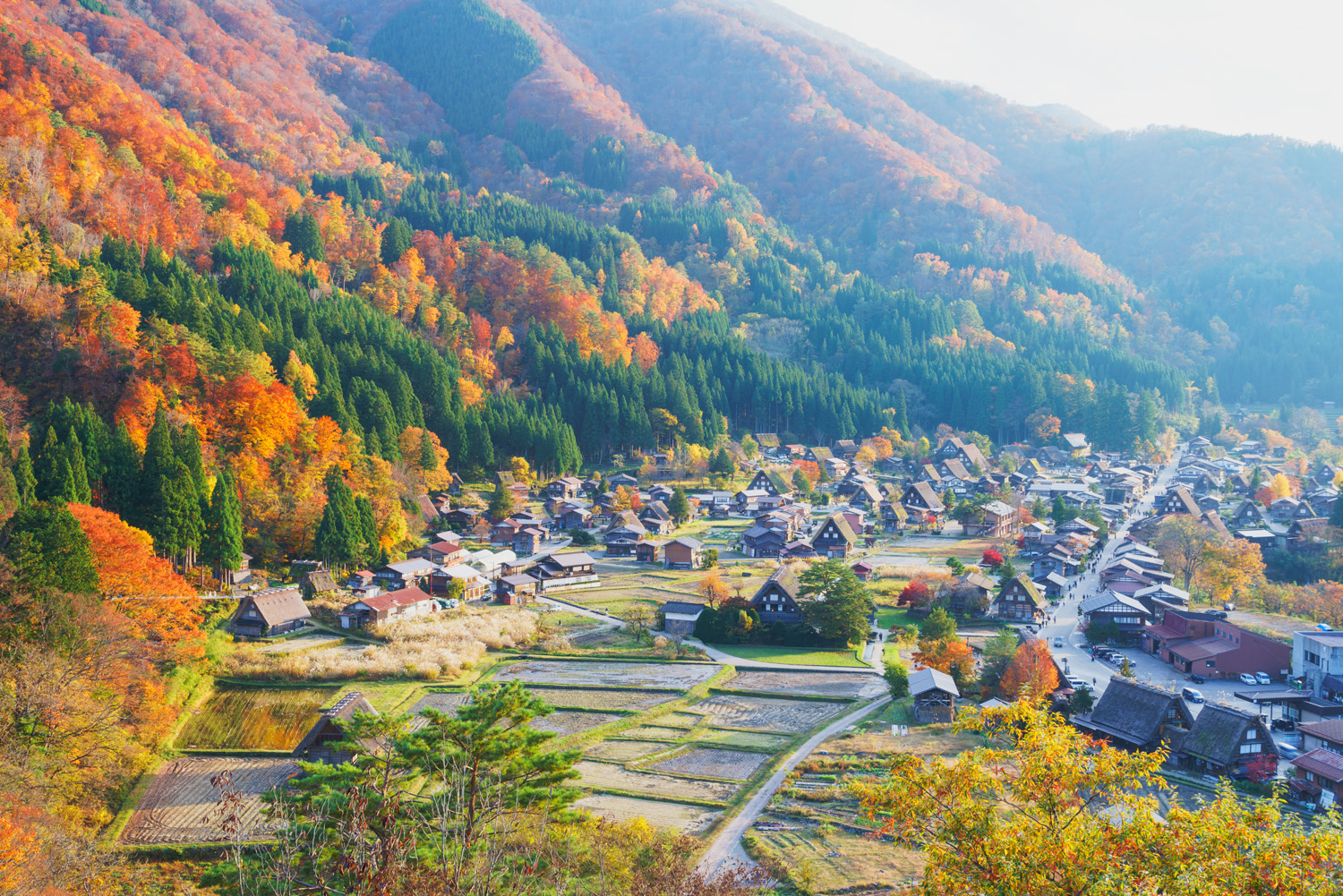
- Shirakawa-go is the name of the Sho River basin in Gifu Prefecture and includes the areas in the old Shokawa Village (currently part of Takayama City) and Shirakawa Village in Onogun. Located among the rice paddies and farmland surrounded by tall mountains, there are still 114 gassho-zukuri farmhouses standing today. Despite being the same gassho-zukuri architecture, regional differences exist between the farmhouses in Gokayama and those in Shirakawa, such as the angle of the roof, how the thatching is laid and the orientation of the entrance. These differences evolved over the years to better match the residents’ needs in each region. The Ogimachi Castle Observation Deck offers an excellent view of the gassho-zukuri farmhouses below. In addition to the valuable traditions and culture, these villages are still home to many people today.
GOKAYAMA
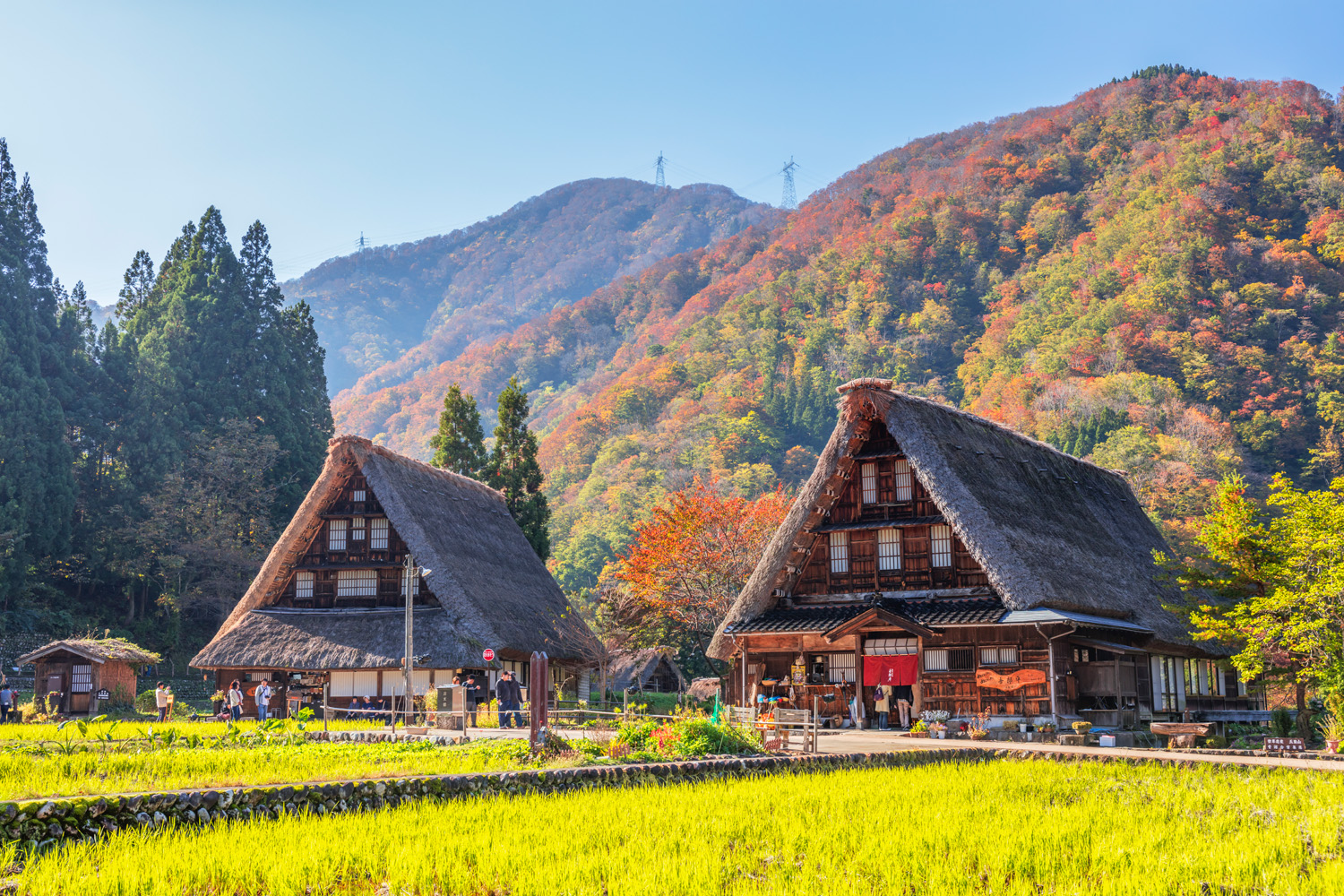
- Gokayama is located in southwest Toyama Prefecture in the region including the old Taira Village, Kamitaira Village and Togamura Village in the current Nanto City. This region became known as Gokayama for its five large valleys: Akaodani Valley, Kaminashidani Valley, Shimonashidani Valley, Otani Valley and Togadani Valley. Around 40 villages are located along the Sho River that winds its way through mountains as high as 1500 meters. Of those villages, there are 20 gassho-zukuri farmhouses located in Ainokura village and 9 such farmhouses in Suganuma village that are still home to people today. Compared to the more famous Shirakawa-go, it has a cozy, more rustic feel.



